Japandi Kitchen Ideas blend the minimalist charm of Japanese design with the warmth of Scandinavian aesthetics, resulting in kitchens that feel tranquil, functional, and refined. These ideas showcase the art of simplicity combined with practical functionality, creating a space where every element has purpose. Expect clean lines, soft natural lighting, and an array of textures that celebrate the beauty of natural materials. Enjoy discovering each unique concept, and let each idea inspire a serene yet stylish culinary haven that reflects your personal taste for Japandi Kitchen Ideas.
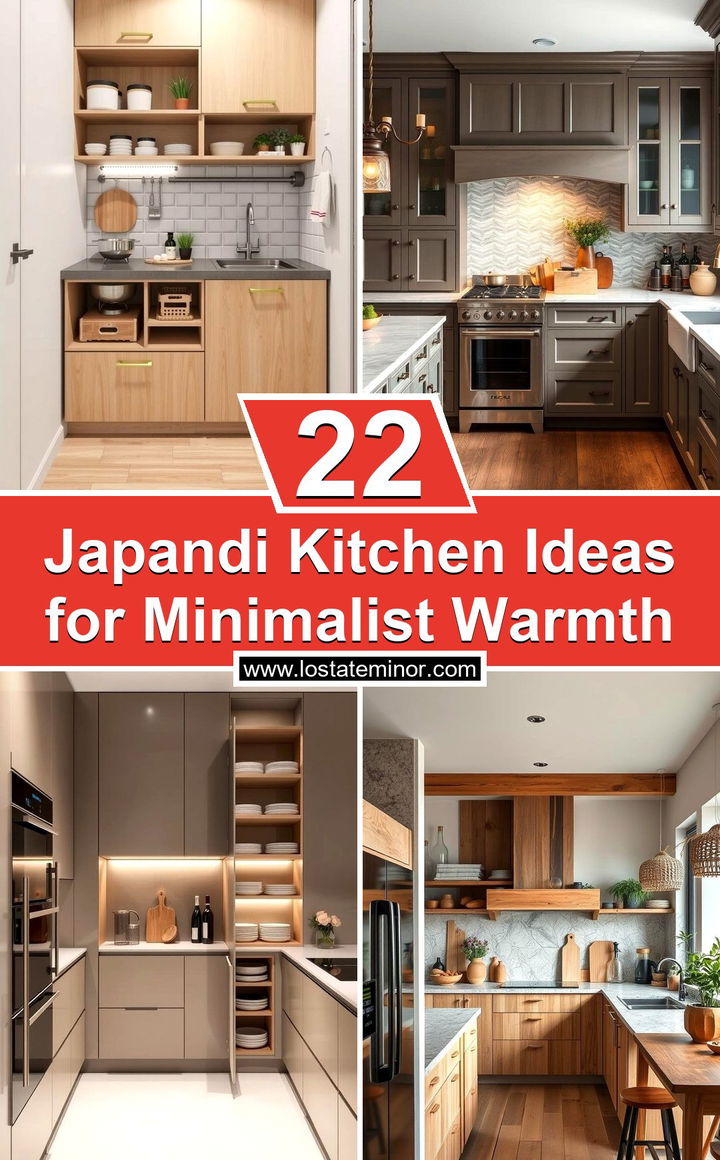
1. Minimalist Harmony in Layout
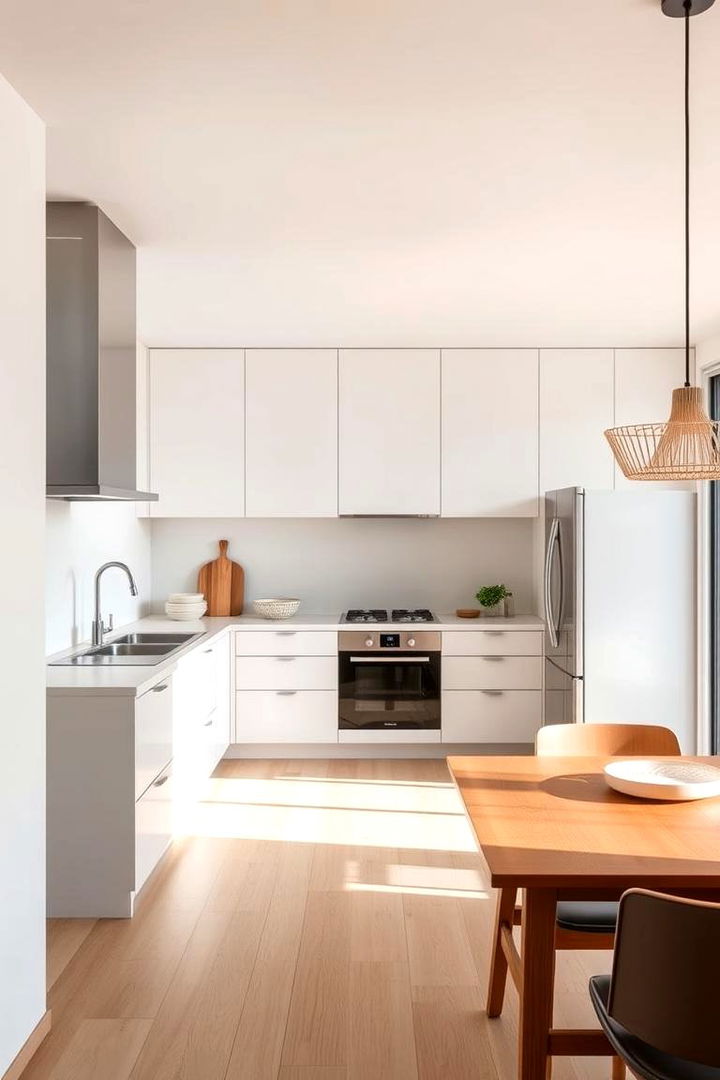
An inviting layout sets the stage for a tranquil Japandi kitchen that combines simplicity with precision. The open floor plan and uncluttered surfaces create an atmosphere of calm where every line and corner is thoughtfully designed. Subtle Japanese influence meets Scandinavian efficiency through clean cabinetry, integrated storage, and natural lighting. This design not only eliminates visual noise but also improves functionality by making the space accessible and organized. With an emphasis on flowing spaces and minimal ornamentation, you achieve a kitchen where work and relaxation seamlessly blend in a balance of aesthetic and utility.
2. Natural Wood Elements and Earth Tones
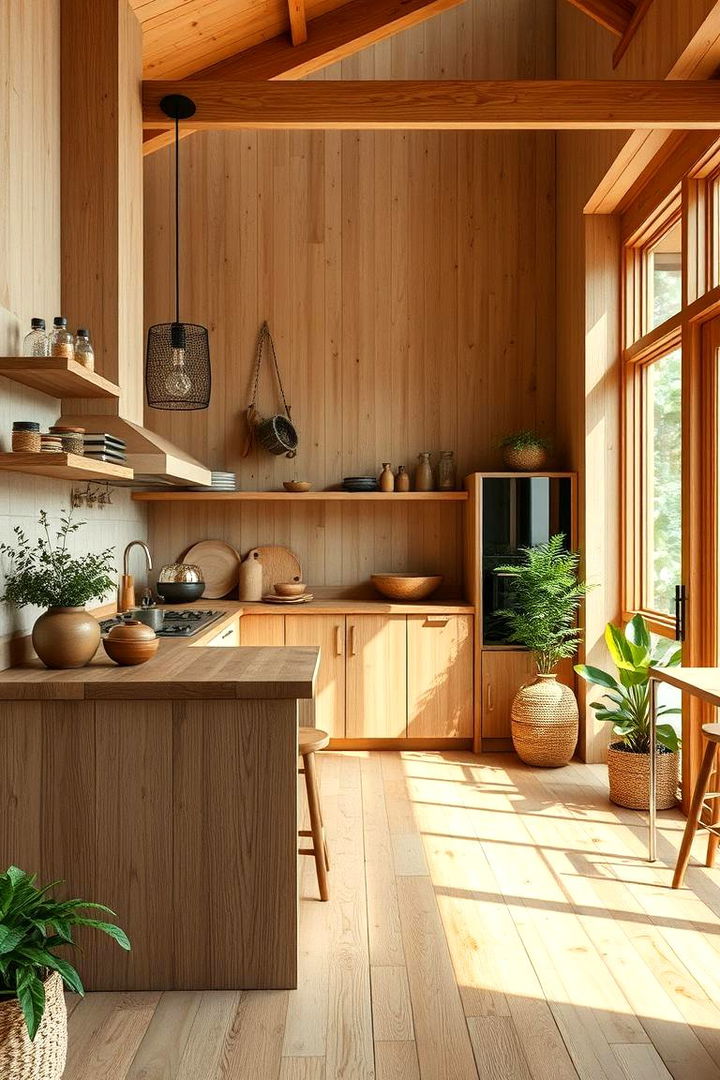
A warm embrace of natural wood and earthy hues infuses this Japandi kitchen with organic charm. Rich wooden textures complement soft neutrals to create an inviting environment that feels both modern and grounded. The interplay of natural materials with minimalist design encourages a sense of balance and simplicity, where every surface tells a story of sustainability. Earth-toned accents highlight the warmth of the wood, reinforcing the connection with nature. This blend not only exudes elegance but also fosters a calm cooking space that feels timeless and eco-friendly in its appeal.
3. Open Shelving with Refined Display

Does the idea of open shelving spark creativity in your kitchen design? Emphasizing clear lines and functional display, these shelves allow you to showcase carefully curated dishware and minimalist decor. The Japandi approach ensures that each item is intentionally placed, balancing aesthetics with practicality. By keeping items visible yet organized, the design fosters an easy-to-clean environment that enhances the cooking experience. This streamlined method of storage not only maximizes space but also cultivates a sense of order, inviting you to appreciate each element’s subtle beauty and functional role.
4. Integrated Appliances for Seamless Design
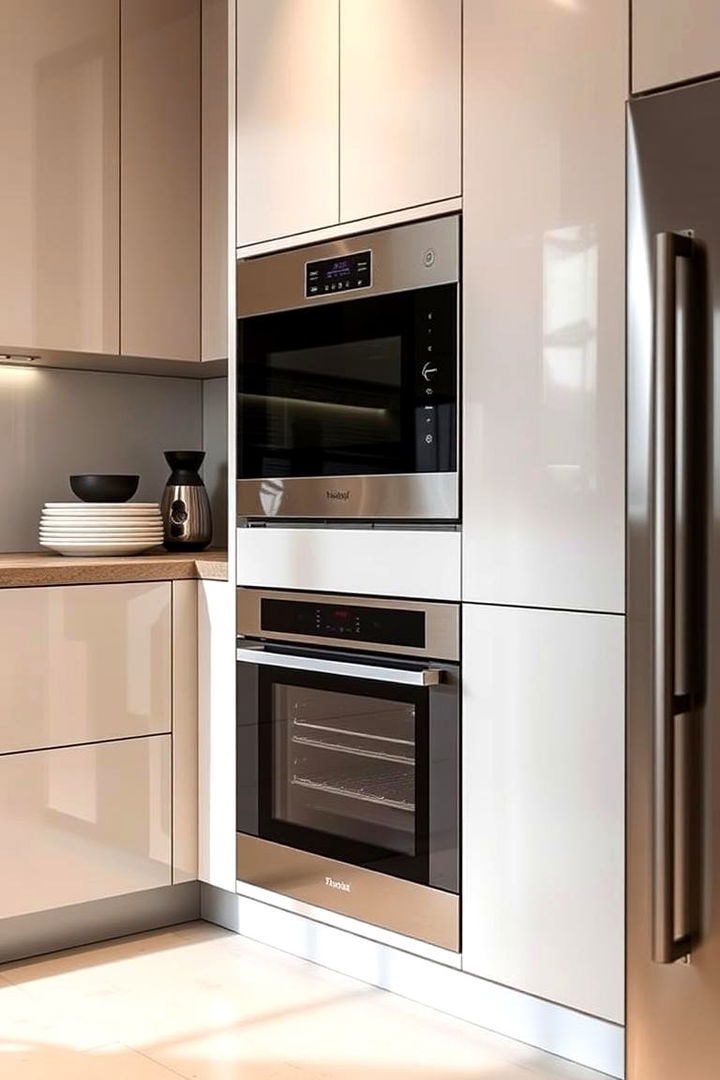
With integrated appliances, the Japandi kitchen achieves a sleek and cohesive appearance that minimizes visual clutter. Concealed technology harmonizes with custom cabinetry, reflecting the design philosophy of blending function and beauty. This approach reduces interruptions in design flow, allowing natural textures and neutral tones to take center stage. The appliances are tucked away elegantly, ensuring that the overall aesthetic remains smooth and uninterrupted. By promoting an atmosphere of calm and efficiency, this design motivates you to explore culinary creativity in a well-organized and visually balanced environment.
5. Zen Garden Accents for Tranquility
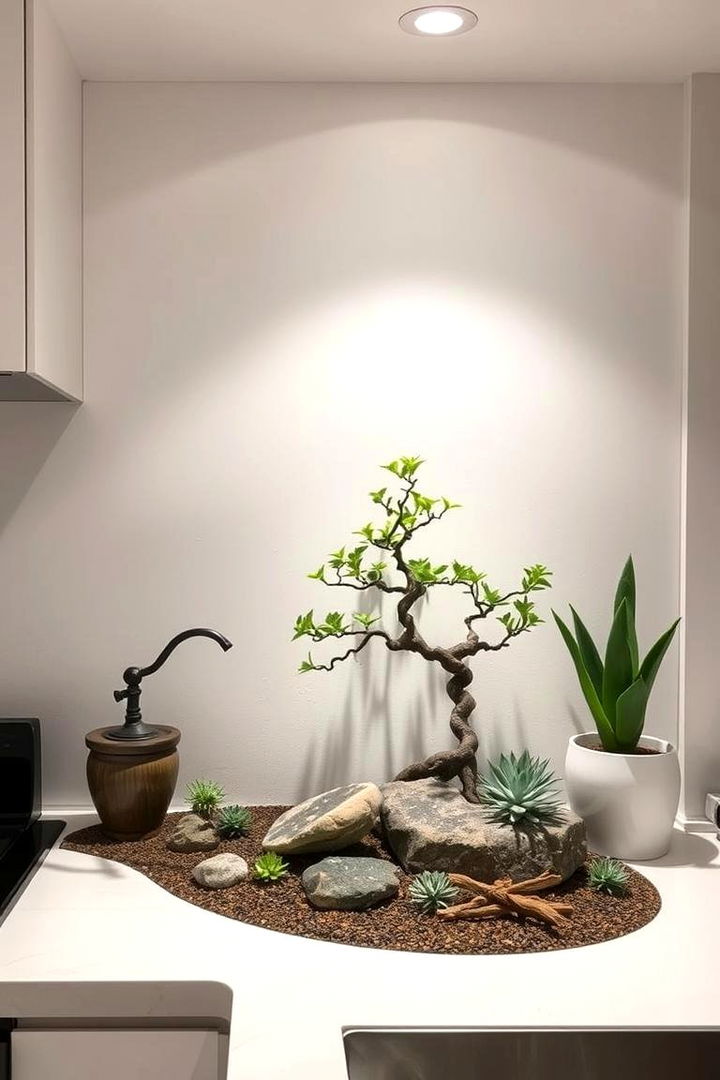
Imagine a touch of Zen right in your cooking space, where a small indoor garden creates a peaceful focal point. Incorporating elements such as bonsai displays or minimal succulents reflects the Japandi penchant for nature-inspired decor. The gentle interplay of greenery and simple stone accents cultivates a serene atmosphere, calming the mind during meal prep. This innovative design not only offers a refreshing contrast to polished surfaces but also encourages a mindful culinary experience. Embracing Zen garden accents transforms your kitchen into a sanctuary that nurtures both creativity and relaxation.
6. Scandinavian Simplicity with Japanese Touches
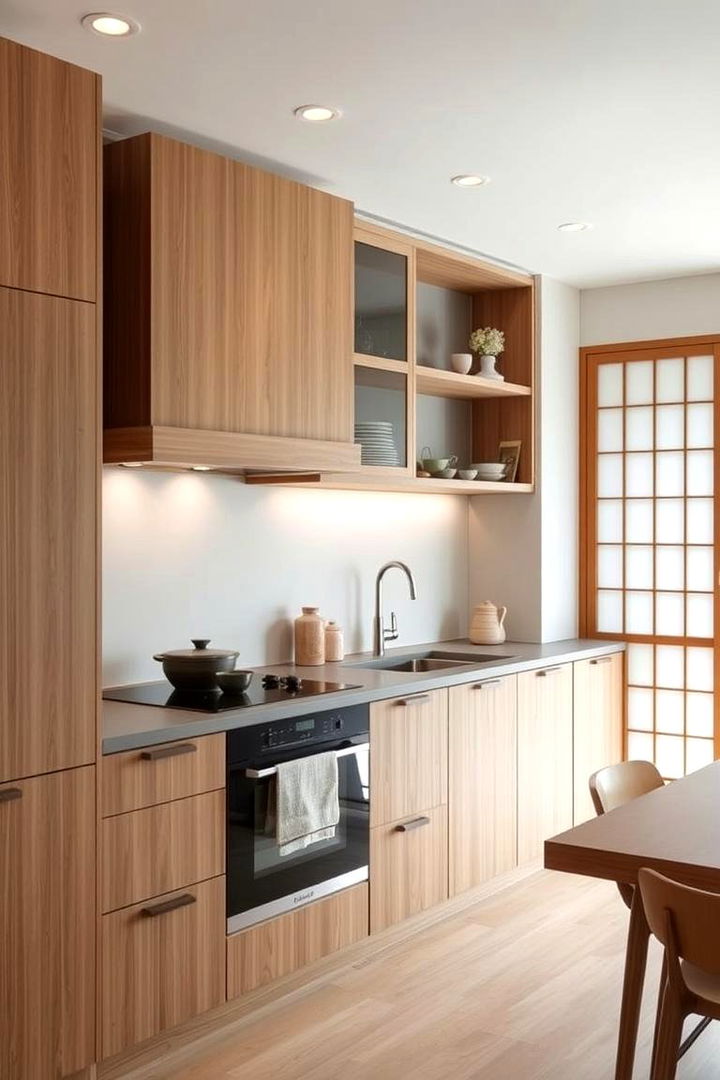
Surprisingly, the blend of Scandinavian simplicity with subtle Japanese details creates an inviting duality in your kitchen. Crisp white surfaces, light wood, and understated patterns are harmoniously enriched with traditional Japanese elements like shoji screens or calligraphy art. This merge of two cultures provides an environment where practicality and tradition coexist effortlessly. The design emphasizes a clutter-free space that serves both as a functional cooking area and a peaceful retreat. With each curated element enhancing minimalism, this approach inspires you to enjoy the balance of calm simplicity and understated design details every day.
7. Muted Color Palette with Bold Highlights
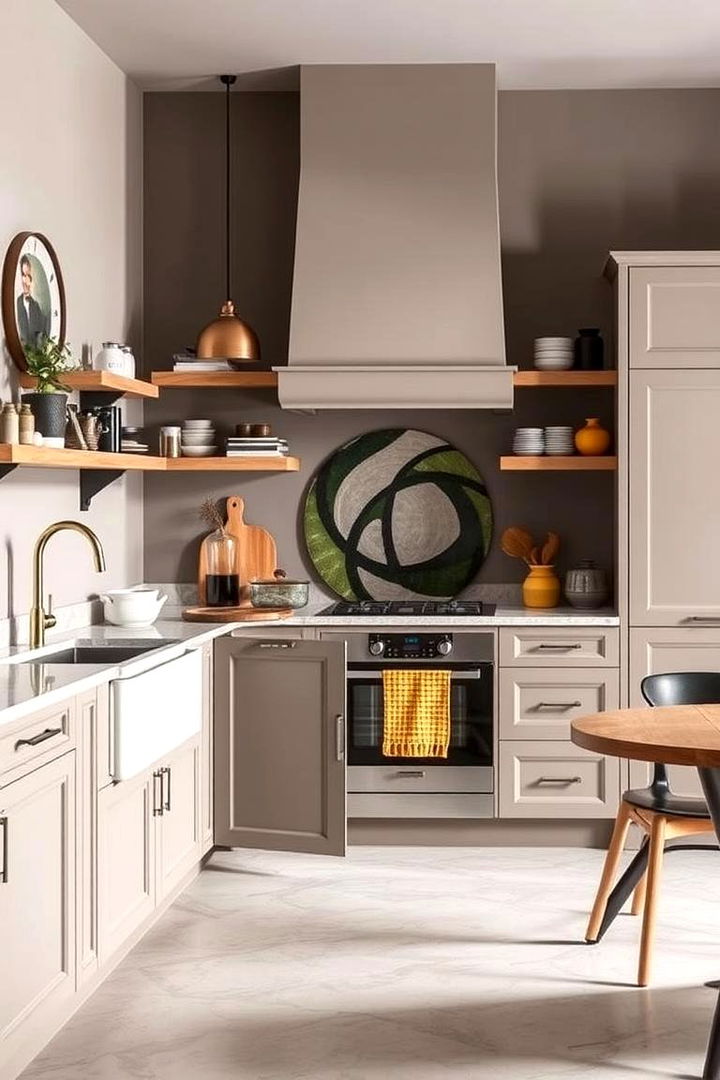
A striking yet understated color scheme sets this Japandi kitchen apart. Soft, muted neutrals dominate the space, allowing carefully chosen bold accents to stand out without overwhelming the senses. These pops of color, found in decorative accessories or feature walls, add personality and serve as focal points amid the calm surroundings. This approach maintains a serene environment while ensuring visual interest. The thoughtful balance between subtle tones and vibrant hints not only supports functionality but also motivates you to embrace style that feels modern, inspiring a creative, lively, and harmonious atmosphere in everyday cooking.
8. Textured Surfaces and Layered Lighting

Bringing together varied textures and a symphony of layered lighting elevates the overall ambiance of your Japandi kitchen. Naturally textured surfaces like bamboo, reclaimed wood, and stone create a multi-dimensional feel that soothes the eye. Soft ambient lighting paired with strategic task lights ensures that every corner is both inviting and practical. The carefully planned contrast between matte and smooth finishes adds depth and intricacy to the space. This design encourages you to experiment with light and texture, resulting in a kitchen that is not only visually appealing but also perfectly tailored for efficient and mindful culinary adventures.
9. Minimalist Storage Solutions for Clarity
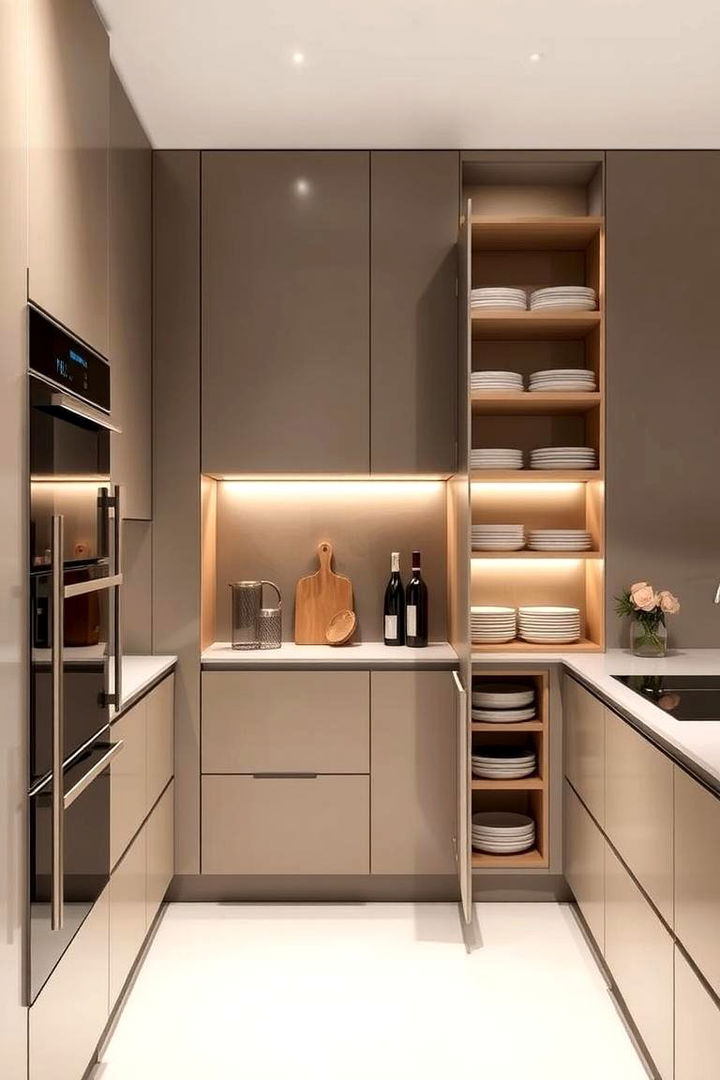
One of the core ideas in Japandi style is achieving a clutter-free environment through intelligent storage. Concealing kitchen supplies within sleek cabinetry or built-in units enhances the minimalist allure of the space. Every item has a designated, hidden spot, emphasizing cleanliness and order. This dedicated storage solution transforms the kitchen into a serene retreat where every tool is neatly tucked away. It reduces stress during meal preparation and contributes to a harmonious cooking environment. By focusing on function and simplicity, the design encourages a clear mind and a space that feels effortlessly organized and calm.
10. Eco-Friendly Materials and Sustainable Style
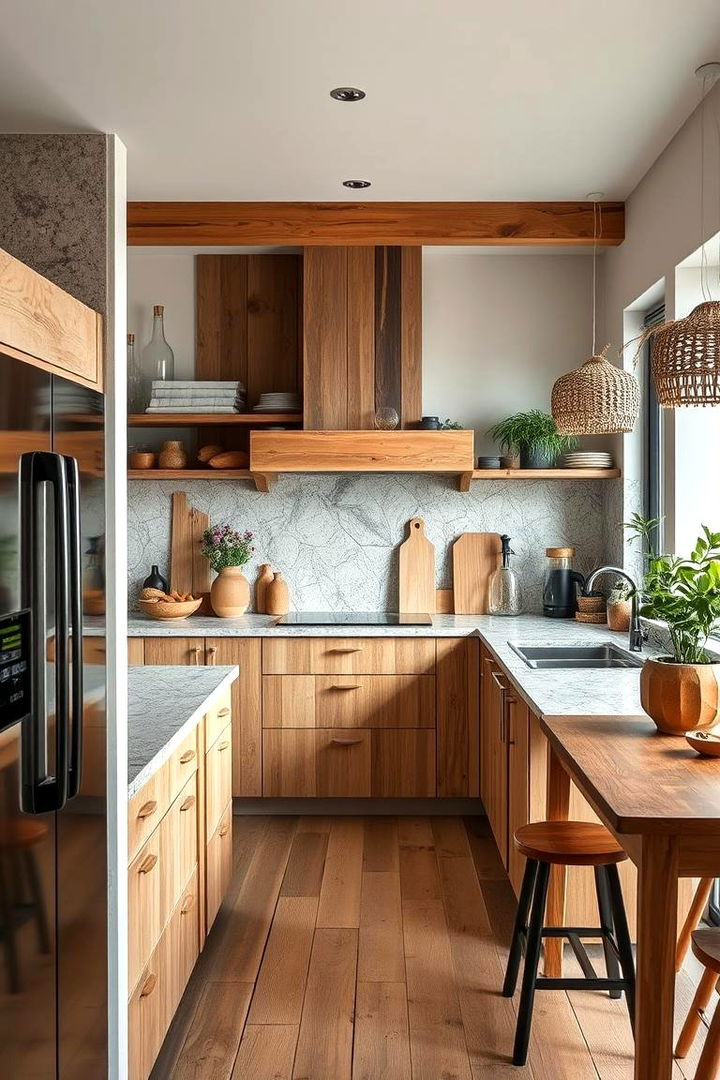
Embracing eco-friendly materials is at the heart of Japandi design, promoting sustainability within a stylish framework. Utilizing reclaimed wood, natural stone, and non-toxic finishes, this approach not only conserves resources but also enhances the kitchen’s natural beauty. The use of sustainable materials creates a warm, inviting space that reflects environmental mindfulness. Every element is carefully chosen to reduce waste while celebrating aesthetics. This focus on green practices guarantees that your kitchen remains an eco-conscious haven where modern design works hand-in-hand with a commitment to preserving nature for future generations.
11. Indoor-Outdoor Connectivity in Design
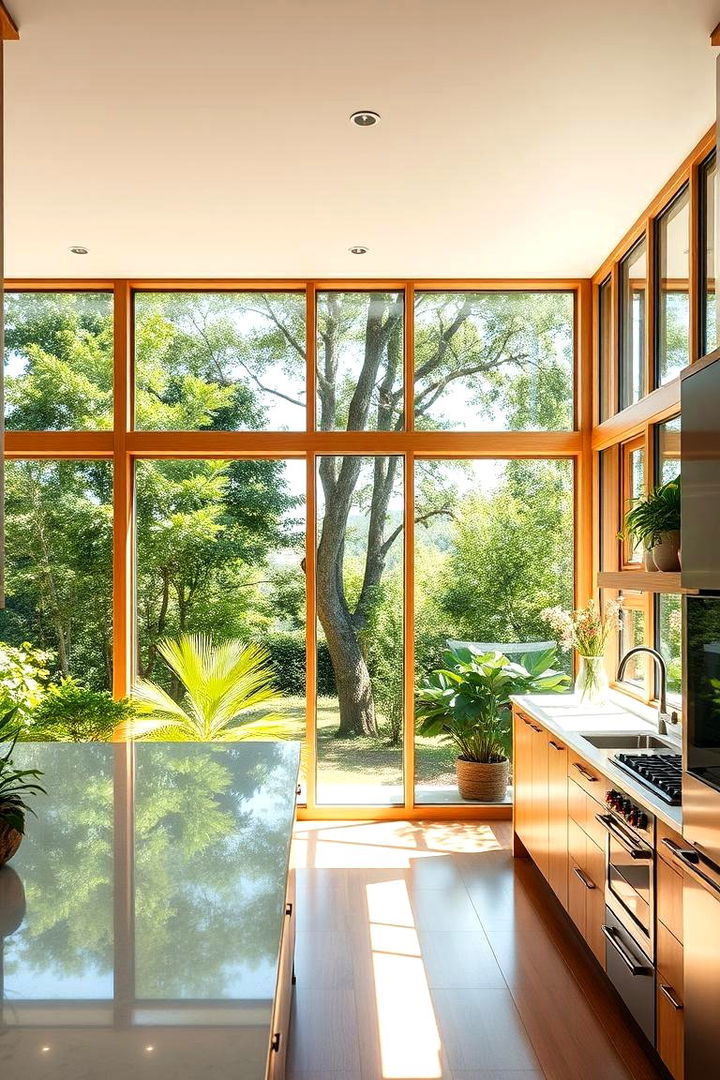
At the heart of a Japandi kitchen is the desire to blur the boundaries between indoors and outdoors. Expansive windows and sliding doors invite natural light and create a seamless transition to an outdoor space. This design promotes an airy ambiance, bringing lush greenery and fresh air into the cooking area. The incorporation of outdoor elements like potted plants or garden views fosters a sense of well-being and connection to nature. With this harmonious integration, your kitchen transforms into a natural retreat that fuels creativity and offers calming vistas, blending practical design with an organic lifestyle.
12. Understated Artistic Decor
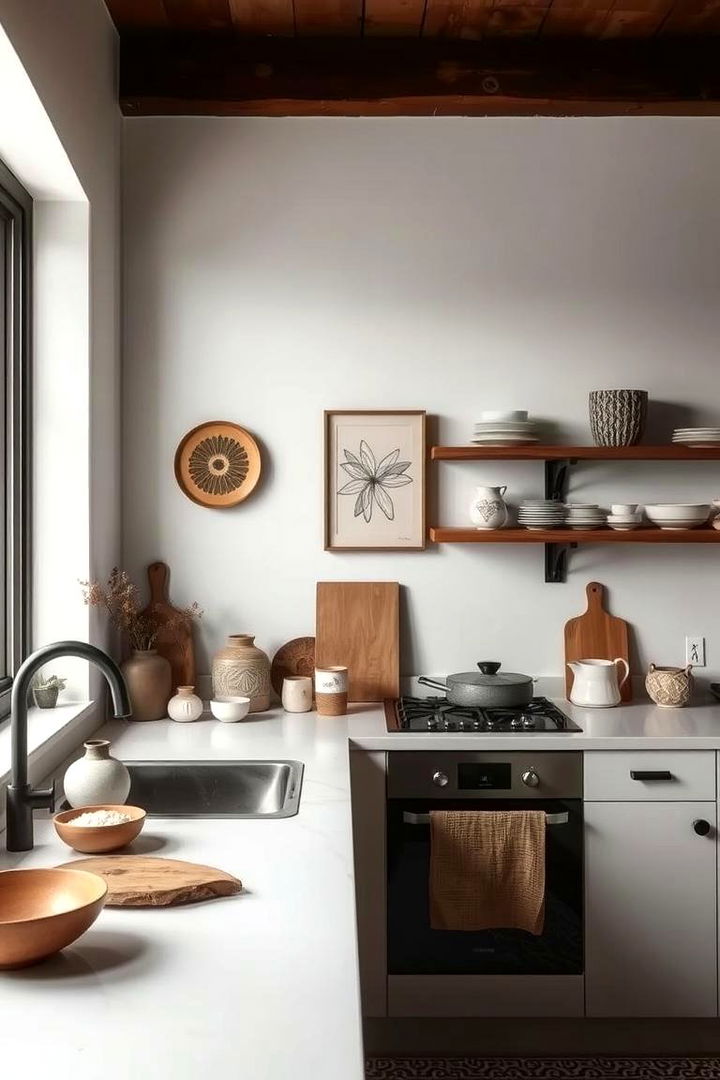
A kitchen can become a canvas for subtle artistic expression while remaining functional and refined. This Japandi approach introduces carefully selected art pieces, delicate ceramics, or handcrafted pottery that add unique personality without overwhelming the space. Each decorative element is chosen for its simplicity and elegance, contributing to a visually balanced environment. The overall effect is the creation of a refined setting where art inspires creativity and balances everyday functionality. By incorporating understated decor, the design not only enhances the aesthetic appeal but also encourages a calm, creative atmosphere that elevates the daily cooking experience.
13. Warm Metallic Finishes for Accents
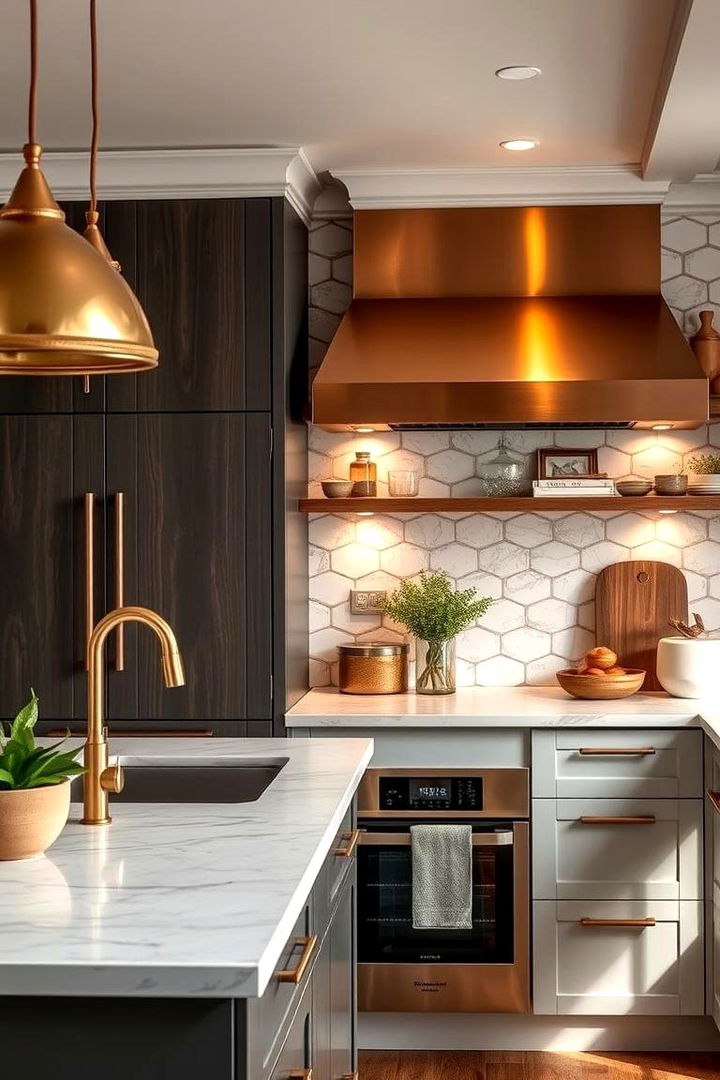
Warm metallic accents can add a sophisticated glow to your Japandi kitchen design. Incorporating subtle hints of brass, copper, or matte gold into fixtures or accents creates a refined balance against the neutral backdrop. These finishes bring warmth and visual interest, harmonizing with natural wood tones and soft lighting. The metallic elements provide both elegance and a touch of modern glamour without compromising the minimalist ethos. This infusion of luxe detail inspires you to appreciate the interplay of light and texture, ensuring each element contributes to a kitchen space that is both practical and beautifully inviting.
14. Traditional Meets Modern Fixtures
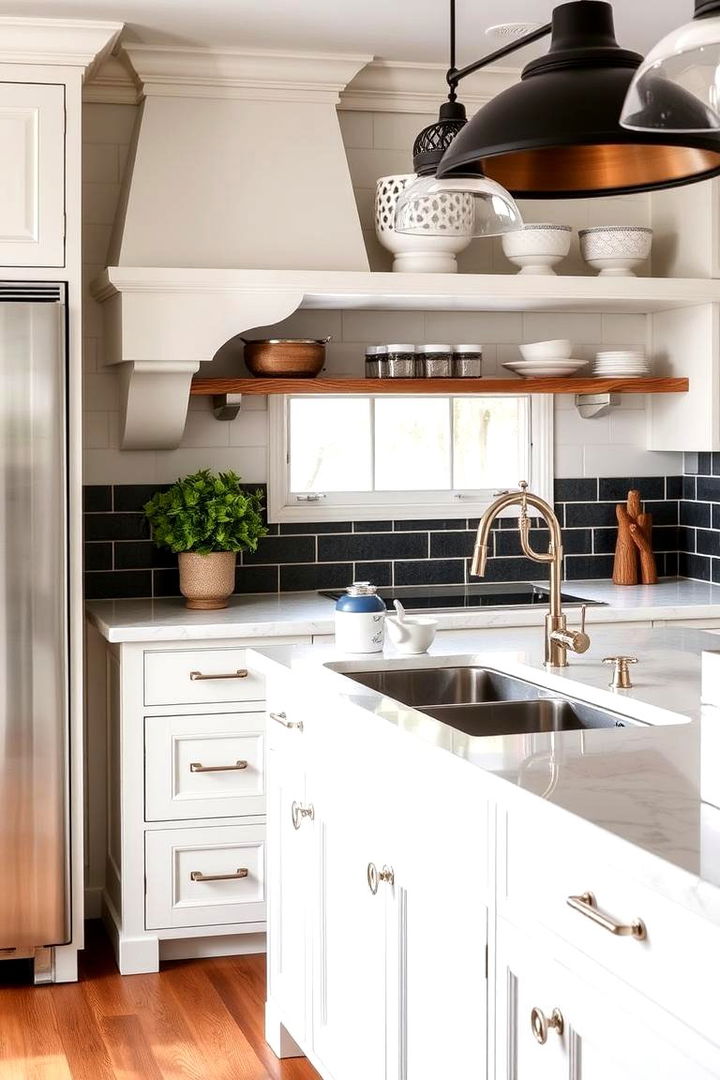
Feeling inspired to merge old-world charm with contemporary design? This concept integrates traditional fixtures like classic faucets or vintage lighting with modern, streamlined cabinetry. The contrast creates a dynamic environment where heritage and innovation coexist. The timeless quality of traditional elements is balanced by modern details, ensuring that the overall design remains fresh and functional. This approach reflects Japandi’s inherent respect for history while embracing the future of design. Such a balanced fusion not only enriches the visual narrative of your kitchen but also encourages a versatile, enduring style ideal for contemporary living.
15. Nature-Inspired Kitchen Island
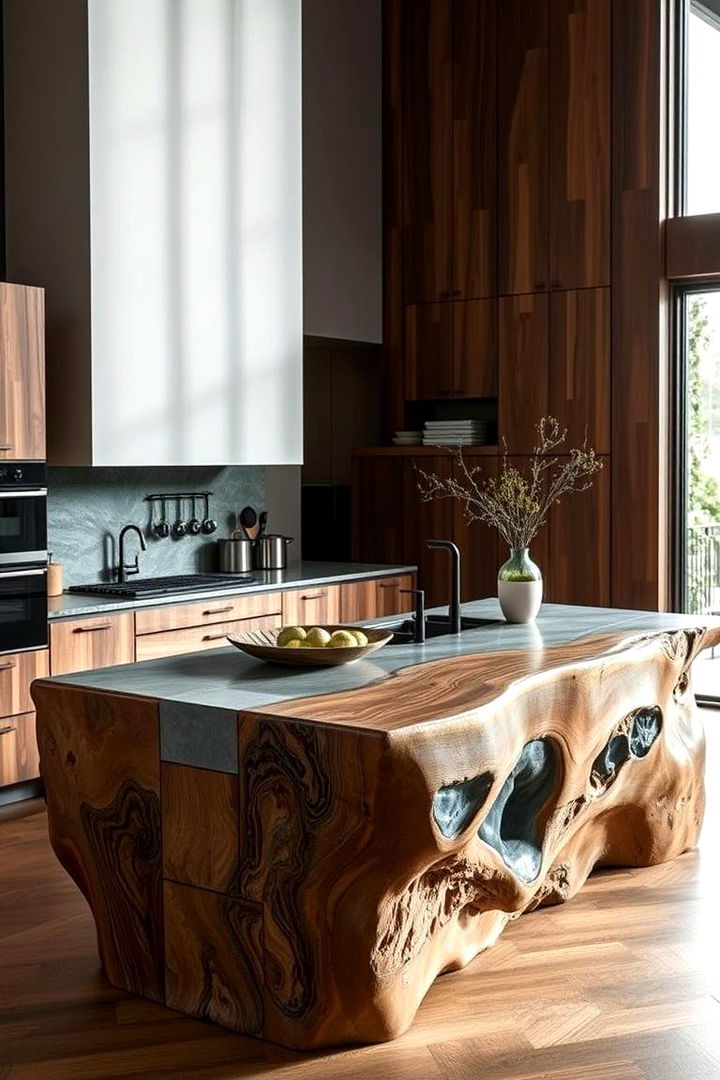
A statement kitchen island transforms the heart of your Japandi kitchen into a work of art. Inspired by nature, this island features raw wooden surfaces, stone countertops, and subtle sculptural lines that draw from organic forms. Its design serves as a functional workspace and a visual anchor that anchors the room’s aesthetic. The natural textures and earthy finishes evoke a sense of calm and balance, encouraging creativity in both cooking and conversation. This striking centerpiece inspires thoughtful interaction and invites you to savor the fusion of natural beauty with modern functionality in every culinary endeavor.
16. Soft, Ambient Lighting for Calm
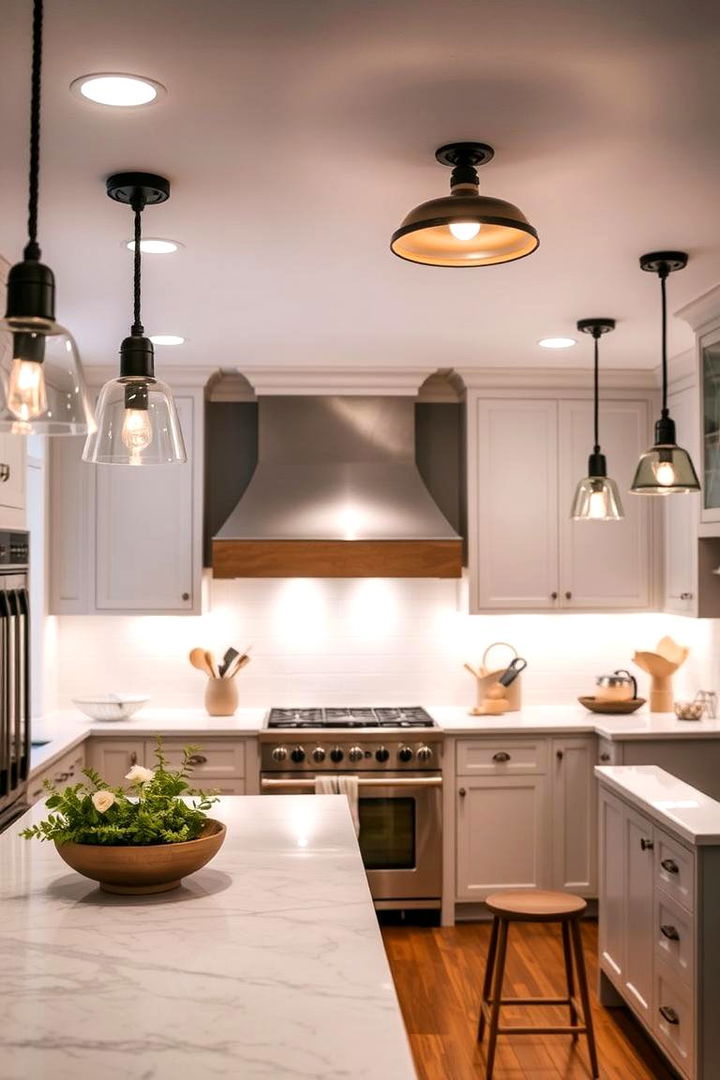
Soft, ambient lighting is essential in creating the soothing atmosphere of a Japandi kitchen. Carefully positioned fixtures and under-cabinet lights bathe each corner in a gentle glow that complements the minimal decor. This subtle illumination enhances the natural textures and unifies the space with a warm, inviting feel. The layered lighting not only improves functionality during meal preparation but also accentuates the delicate balance of design elements. By embracing an ambiance that is both calming and practical, the kitchen becomes a serene retreat where every detail is curated to inspire peaceful creativity and harmonious living.
17. Zen-Inspired Tea and Meditation Nook
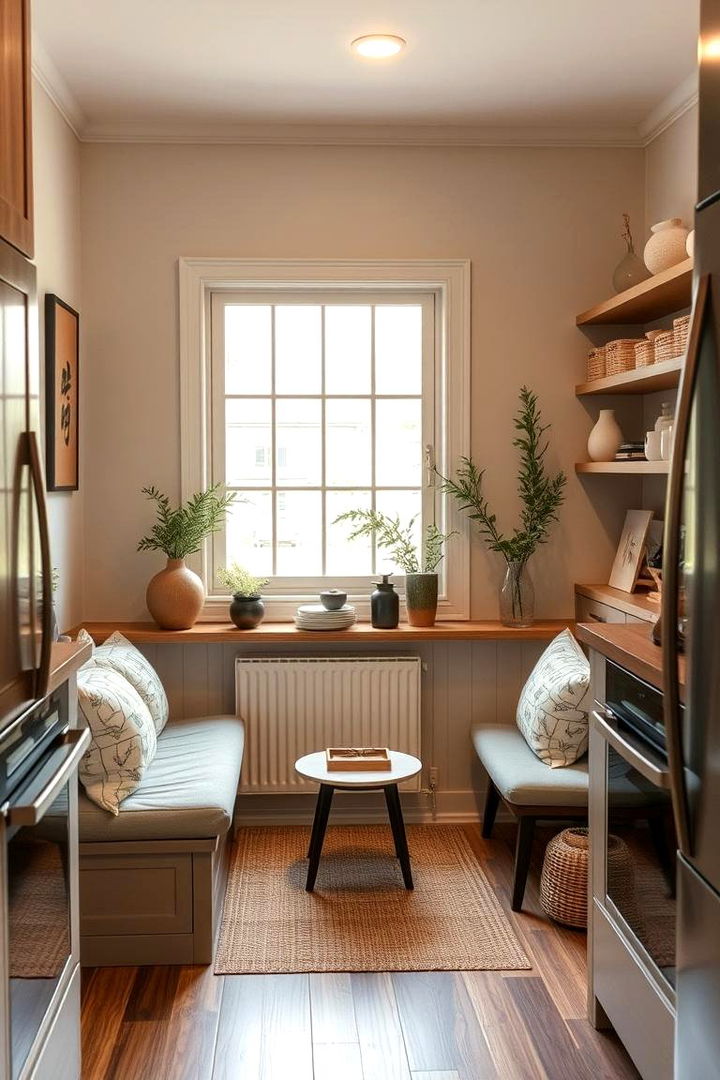
Could a dedicated nook for meditation and tea elevate your kitchen experience? Designing a small Zen-inspired corner within the kitchen offers a quiet retreat for mindful breaks. Minimal decor, soft seating, and natural elements come together to create an intimate space for reflection and tea ceremonies. The area complements the overall Japandi aesthetic with its clean lines and uncluttered simplicity. This serene nook not only enhances functionality but also promotes well-being by providing a moment of calm amid daily routines, inspiring a balanced approach to both cooking and self-care.
18. Vintage Japandi Fusion Designs
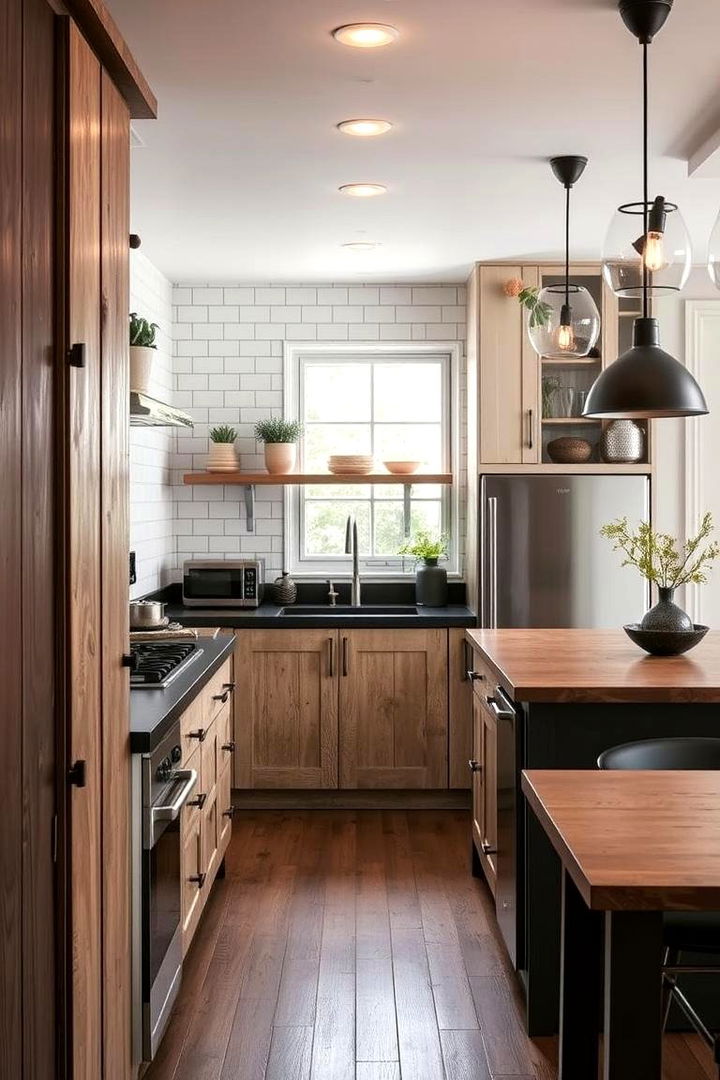
Blending vintage charm with Japandi modernity, this style incorporates antique accessories, retro lighting, and time-worn textures with sleek, contemporary lines. The result is a space where history and modern sensibilities intersect in a graceful fusion. Items like distressed wood elements and classic hardware are carefully combined with minimalist surfaces to create a layered, storied atmosphere. This thoughtfully curated mix brings depth and personality to the kitchen while maintaining a streamlined, intentional design. The vintage touches evoke nostalgia while the minimalist foundation keeps the kitchen vibrant and thoughtfully balanced in every detail.
19. Compact Urban Japandi Kitchen
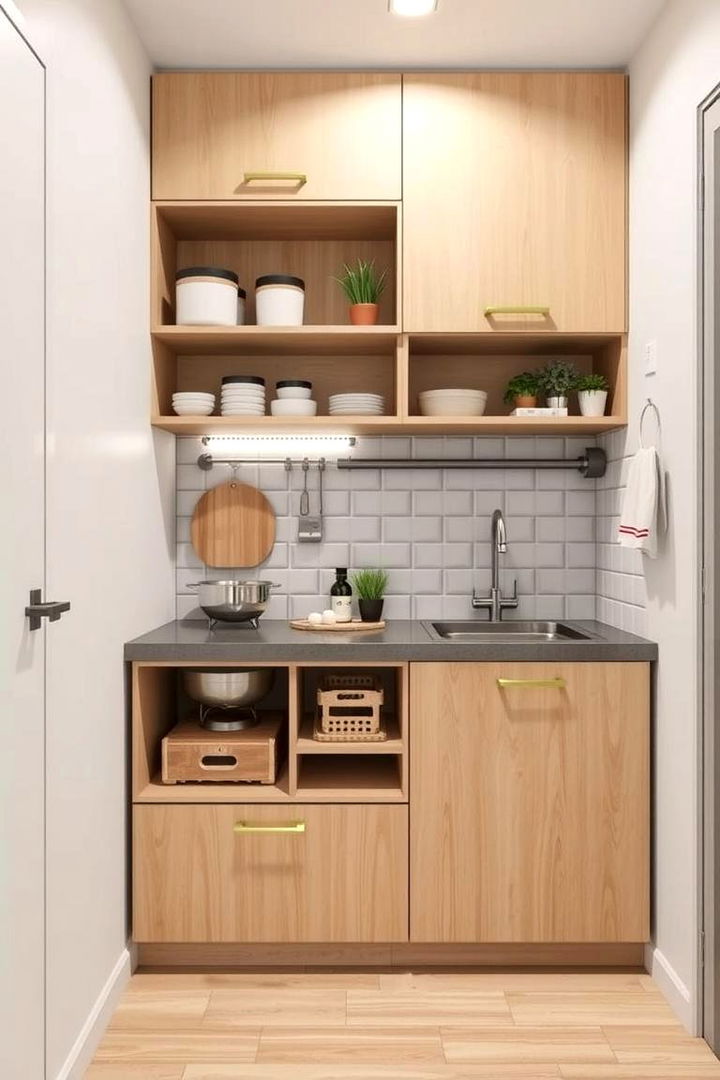
For urban dwellers, a compact Japandi kitchen offers a smart blend of style and functionality in limited spaces. Clever design strategies maximize every inch, from multi-functional storage to seamlessly integrated appliances. The thoughtful layout allows natural light and airy decor to create a sense of spaciousness despite the scale. Clean lines and uncluttered surfaces foster an environment that is both calming and efficient. This urban design proves that even smaller spaces can be transformed into a serene, highly functional kitchen where the principles of Japandi style make every detail count toward a refreshing and practical living area.
20. Seamless Open-Concept Dining Integration
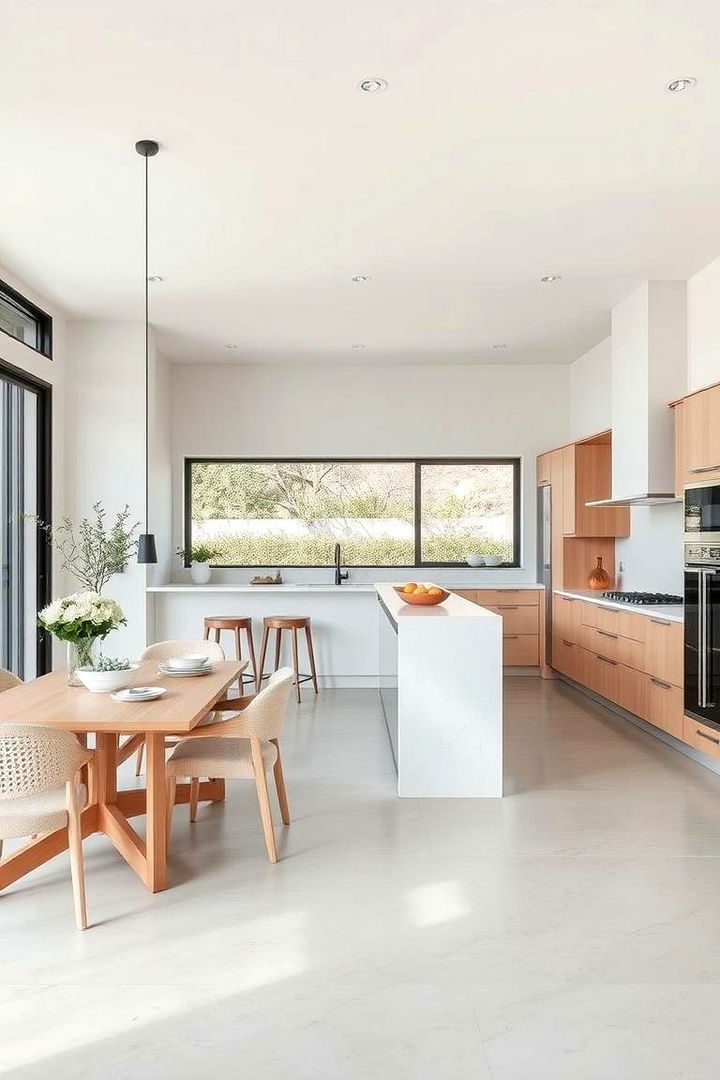
With an emphasis on continuity, this Japandi kitchen features a seamless integration of dining and cooking areas that promotes effortless flow. The open-concept design bridges the space between culinary and dining zones through clean lines, uniform materials, and natural hues. This configuration encourages interaction and multipurpose use while ensuring the aesthetic remains calm and unified. The absence of rigid boundaries creates a harmonious environment that is both inviting and versatile. It inspires a sense of community and connectivity, allowing you to enjoy meals and conversations in a setting that epitomizes the refined elegance of Japandi design.
21. Bespoke Crafted Details for Personal Touch
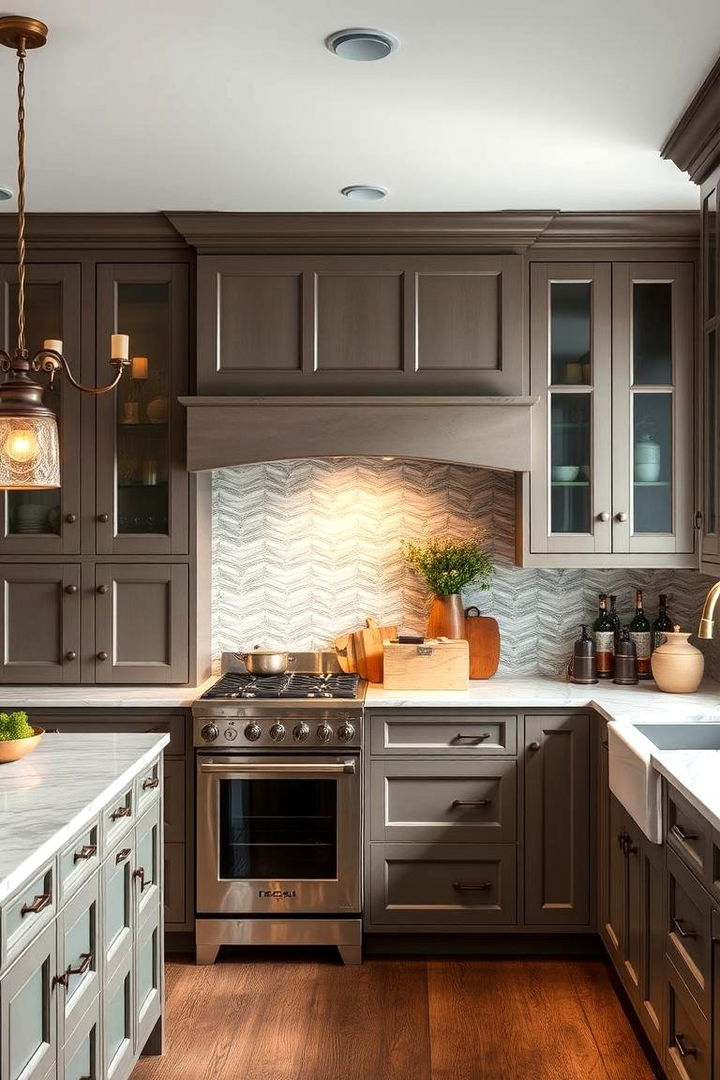
Incorporating bespoke crafted details can elevate your kitchen from ordinary to extraordinary. Handcrafted cabinetry, artisanal lighting, and custom tile work add unique character and personalization to the Japandi space. These one-of-a-kind accents infuse the kitchen with artistry and thoughtfulness, ensuring every detail resonates with quality and care. The emphasis on craftsmanship is a tribute to timeless techniques that blend seamlessly with modern minimalism. This thoughtful approach invites you to celebrate individuality and the beauty of handmade details, resulting in a kitchen that feels both functional and deeply personal in its design.
22. Bohemian Japandi Twist for Eclectic Flair
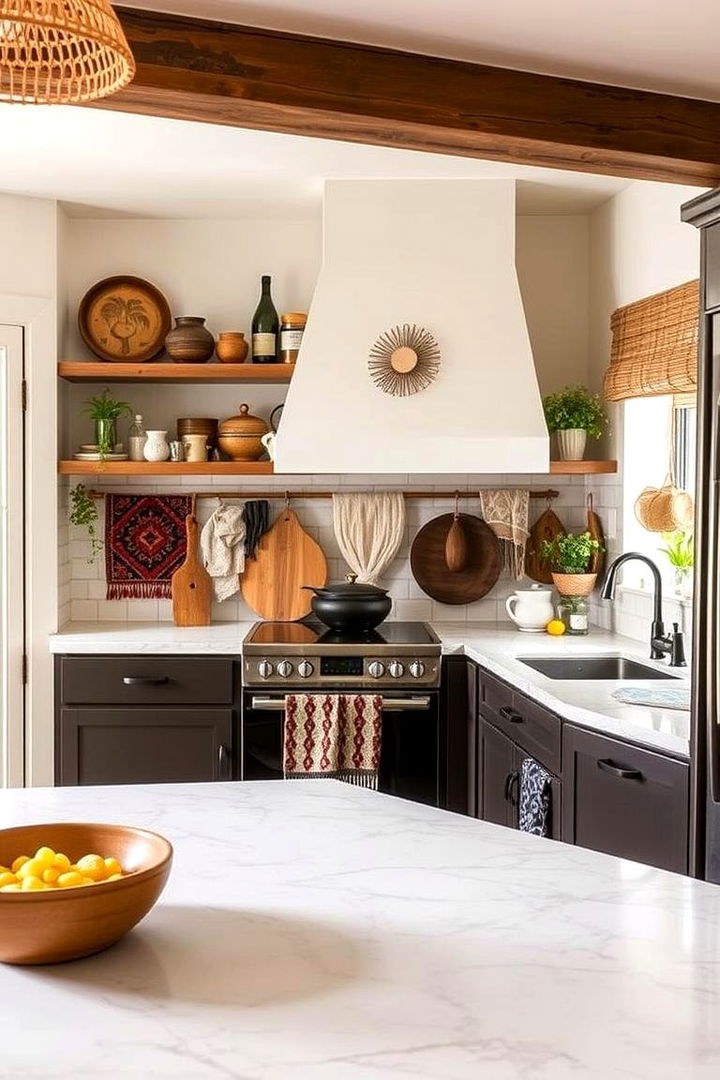
A playful bohemian twist on traditional Japandi style introduces a hint of eclectic charm without compromising minimalism. Subtle layers of texture, unexpected patterned textiles, and handcrafted decor merge with smooth surfaces and natural wood tones. The result is a dynamic yet serene kitchen space that celebrates creativity and individuality. This design invites you to explore a relaxed, artistic side while maintaining functionality and simplicity. The careful infusion of bohemian elements adds personality and warmth, encouraging an innovative, lively atmosphere that still honors the calming principles of Japandi design for a truly inspiring culinary space.
Conclusion:
Bringing together refined minimalism and natural warmth, these 22 Japandi Kitchen Ideas showcase the art of simplicity and functionality in every detail. Each concept, from integrated appliances to bespoke handcrafted finishes, tells a story of balanced design and personal expression. With eco-friendly choices, serene lighting, and clever spatial organization, you are invited to explore a kitchen environment that nurtures creativity and peace. These innovative ideas illustrate how thoughtful design transforms everyday spaces into artistic retreats that inspire both culinary creativity and mindful living, perfectly embodying the essence of Japandi Kitchen Ideas.











